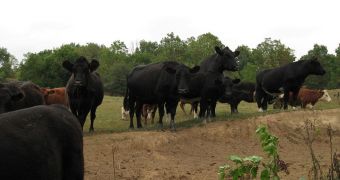For a significant period of time, researchers thought that the presence of beef cattle joins forces with global warming, turning rich lands into sterile areas. They have now revised their theory, reaching the conclusion that cows are actually a beneficial factor correlated with the wellbeing of the entire ecosystem.
Alan Savory is the leader of a new trend, entitled the “holistic management,” meant to highlight the cows' overall positive role. Therefore, he decided to raise cattle in infertile regions from Zimbabwe, reports Triple Pundit.
Furthermore, after achieving this goal, he is now capable of proving that his actions have translated into a successful fight with desertification. Savory managed to rebuild eroded topsoil throughout the entire process, reestablishing the natural balance of an ecosystem which was long forgotten, because of its lack of utility.
His model was copied by a group of local farmers from South Dakota, who are now proud to share the secret.
The key element in this environmentally-friendly equation seems to be the number of cattle displayed on the field, that should exceed the land's overall potential.
Despite any logic, farmers should put more cows on the field than they might consider appropriate, letting them graze the parcel and then move to another one.
Their presence has to affect the surface for a short period of time, offering the land enough time to recover. And the process can go on and on, until it shows the expected results.
This operation has a long list of advantages. First of all, it stimulates the roots of grass, making them stronger and more efficient.
Second, the cow manure enriches the soil quality, applied in small amounts. This is why, despite the fact that the entire process might seem empiric, it requires a lot of planning and monitoring.
Savory’s innovative yet perhaps centuries-old technique can respond in a more effective manner to the increasing demand for food of 7 billion inhabitants, without having to rely on limited resources or a considerable financial support.
As long as the market will have red meat, local farmers will count on the help of plenty pounding hooves ready for the job, and a considerable amount of cow poop ready to do the trick.

 14 DAY TRIAL //
14 DAY TRIAL //